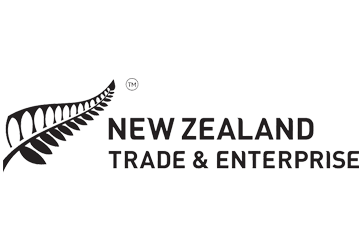The New Zealand Trade & Enterprise (NZTE) Digital Operations department is far from what you’d imagine a government department is like.
“When we advertise a role we’re usually overwhelmed with responses,” said Aaron Evans, Director Digital Operations at New Zealand Trade and Enterprise. “We have the best job in the country. We work for a cause: New Zealand.”
NZTE is tasked with growing the country’s economy and reputation by connecting international investors and exporters with local high-growth opportunities with technology playing a key role.
Digitally broken
“It wasn’t always that way,” recalled Aaron, who describes the organisation as “digitally broken” when he joined five years ago. While there had been efforts to digitise processes throughout 53 offices in 30 locations around the globe, nothing really worked as it should. “Digital was a dirty word,” he remembered.
Employees found that they needed 15 minutes to boot up their legacy video conferencing solution and get it working at the start of every meeting, creating friction in the user experience and impeding their mission to help New Zealand succeed.
“We are on the hook for delivering something in the order of billions back to the New Zealand economy,” Evans pointed out. “There’s no room for inefficiency with targets of this size.”
Because the organization is geographically dispersed in 53 offices across 30 global locations, video communications often replace face-to-face meetings as a critical means of communication.
“You can’t get the same nuances from a phone call than from seeing each other on screen,” Evans explained. “It seems small, but video makes it possible for a BDM (Business Development Manager) in China to have an efficient conversation with someone here in New Zealand.”
Me Mahi Tahi Tātou
“Me Mahi Tahi Tātou” means working together in Maori, and it’s exactly what CEO Peter Chrisp decided must happen when he brought Aaron on board to digitally unite the organisation under the CIO.
“Our CEO welcomed me to the team and then promptly whispered to one side; ‘For goodness sake, please sort out the user experience for video conferencing!’ I was clear on my role from the start.”
NZTE went to market with a request for proposal with two key criteria in mind: it had to work well, and it absolutely had to be easy to use. “When we came across Zoom we thought ‘it can’t be this easy,” Evans said.
Zoom’s unrelenting focus on usability made Zoom Rooms a clear winner for Evans who immediately settled on deploying it in three main conference rooms in Wellington, Auckland, and Singapore.
Zoom proved to be far more reliable than the organisation’s legacy video conferencing platform and Evans received the go-ahead for additional Zoom Rooms deployments in each office. Although Evans initially budgeted for 43 Zoom Rooms, his coworkers’ enthusiasm for Zoom resulted in a much larger deployment. “We have 129 Zoom Rooms so far!” Evans said.
Zero to hero
NZTE’s decision to implement Zoom was the beginning of a video communications model that has transformed virtually every aspect of the organisation, propelling the Digital Operations department from zero to hero in less than a year. NZTE also integrated Zoom with Microsoft Outlook and Microsoft Teams applications, allowing employees to launch meetings without leaving core business tools.
NZTE was empowered to revamp its Pounamu awards, which is an annual internal conference that celebrates the previous year and sets the direction for the year ahead. During past years, the awards have been plagued by poor audio and pixelating video, but last year’s event was completely different.
Evans’ team planned and executed a full green screen studio production with New Zealand-themed backgrounds, animated PowerPoints, and video snippet recaps from earlier sessions played throughout the event, all centrally controlled from Zoom.
“It was fully immersive,” Evans said. “The year’s largest cultural event on Zoom from end to end.”


